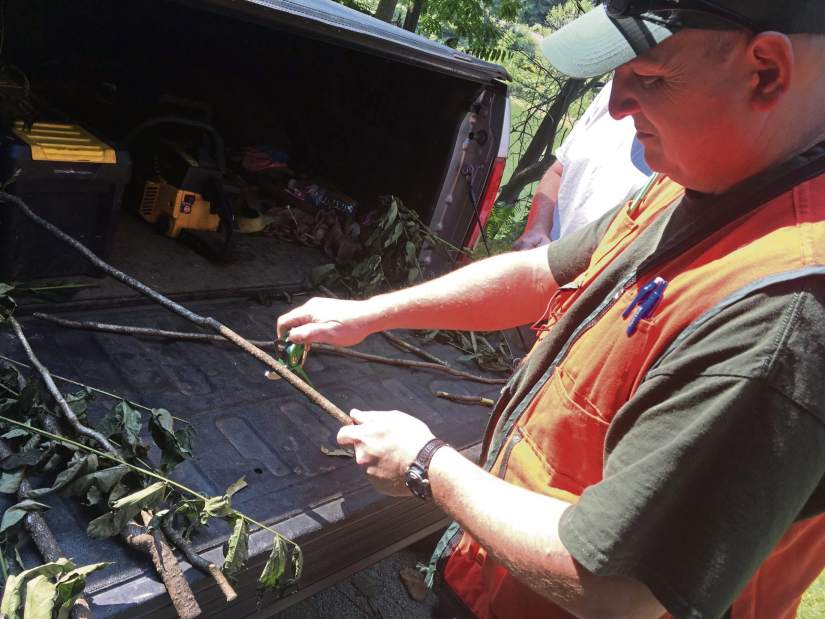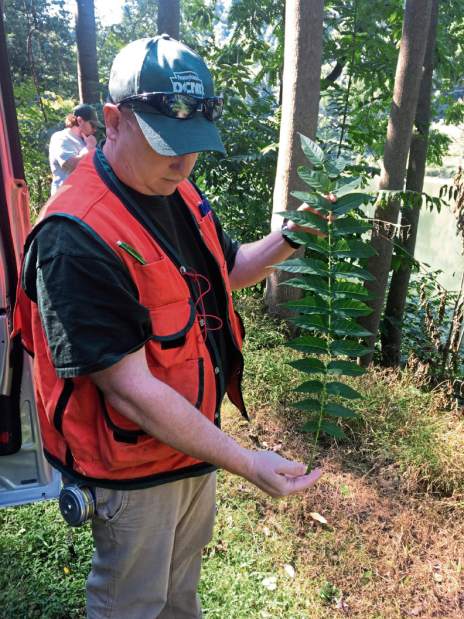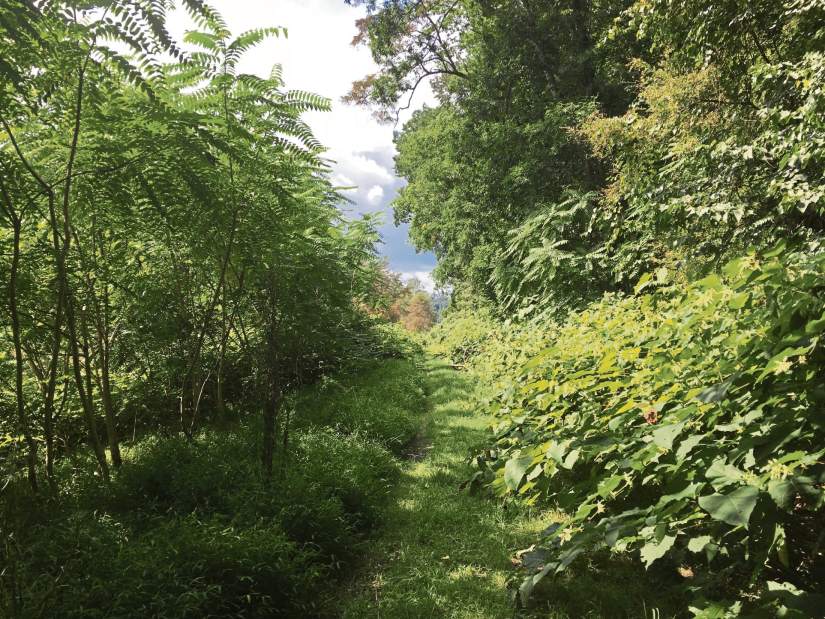Foresters working to eradicate ailanthus trees along Roaring Run trail
The ailanthus tree looks like a sumac but is a much more dangerous denizen of local landscapes.
The ailanthus, also is known as the "tree of heaven."
But whose heaven?
Perhaps someone in China, where the tree originated.
For U.S. foresters, arborists and the keepers of parks and public lands, however, the ailanthus is a thriving invasive species devouring native trees.
An experimental treatment recently used along the Roaring Run trail in Kiski Township is showing promise for stopping this recent scourge.
Invasive Ailanthus Trees
Director of Roaring Run Watershed Association John Linkes, talked about a Pilot program to eliminate the invasive Ailanthus Tree along the trail.
Still, the proliferation of the ailanthus is dastardly.
The adult female tree can put out hundreds of thousands of seeds each year, which are easily windblown, according to Andrew Rohrbaugh, an ecologist with the Pennsylvania Department of Conservation and Natural Resources in Harrisburg.
Then, the ailanthus can choke out native trees with its underground roots that not only produce an abundance of new trees, but also send out chemicals that slow the growth of competing vegetation, according to Rohrbaugh.
But, like many things in nature, the tree's most potent characteristics that allow it to rule a landscape can also hasten its demise: Because ailanthus trees are connected via that underground root system, a seemingly innocuous fungus can kill not one but a whole stand of ailanthus.
Unnatural tree for region
According to the National Park Service, the ailanthus was introduced by a Pennsylvania gardener in 1748 and was made available commercially by 1840.
It was popularized in the book "A Tree Grows in Brooklyn," by Betty Smith.
There are significant infestations of the tree throughout the state, according to Rohrbaugh. "It's a big deal now as people are realizing the threat of invasive species and the impact on the native ecosystems," Rohrbaugh said.
"With a tree like this, if you want a timber harvest off of your property, there is not retail value for this lumber. If you want wildlife, there is nothing that feeds significantly on this tree."
According to Rohrbaugh, the ailanthus kept spreading out of urban areas, where they were originally planted in New York City and Philadelphia.
They thrive in soils that are disturbed, dry and rocky.
"It actually responds well to railroad tracks and right of ways," Rohrbaugh said.
The trees were opportunists, colonizing areas where gypsy moths decimated large tracks of trees in the 1980s, he added.
Got fungus?
John Brundege, a DCNR forester who covers Jefferson and Armstrong counties, brought in the Verticillium fungus, which will produce a wilt, clogging the vascular tissue of the ailanthus tree and killing it.
The fungus is not known to harm native tree species.
"The ailanthus is widespread in Roaring Run, and they wanted to do something about it," Brundege said.
The Conservation District of Armstrong County worked with the Roaring Run Watershed Association to bring in Brundege and the fungus.
The forester arrived at Roaring Run last week with a pickup truck bed holding a bundle of dead branches, which are believed to be infected with the fungus.
Brundege merely shaves off the outer layer of bark of one of the branches and places it next to the base of one of the largest ailanthus trees in a stand, which he scores with a small knife.
The wilt will move through 200 to 400 feet of soil a year, according to Brundege.
Once the fungus hits the tree, "it moves pretty quick after you peel back bark and put the spores nearby," he said.
There could be signs of some die-off of the trees in as little as two weeks, Brundege added.
DCNR, the conservations district and Roaring Run volunteers will monitor the progress and they plan to treat more areas with the fungus in the future.
Mary Ann Thomas is a Tribune-Review staff writer. Reach her at 724-226-4691, mthomas@tribweb.com or via Twitter @MaThomas_Trib.



